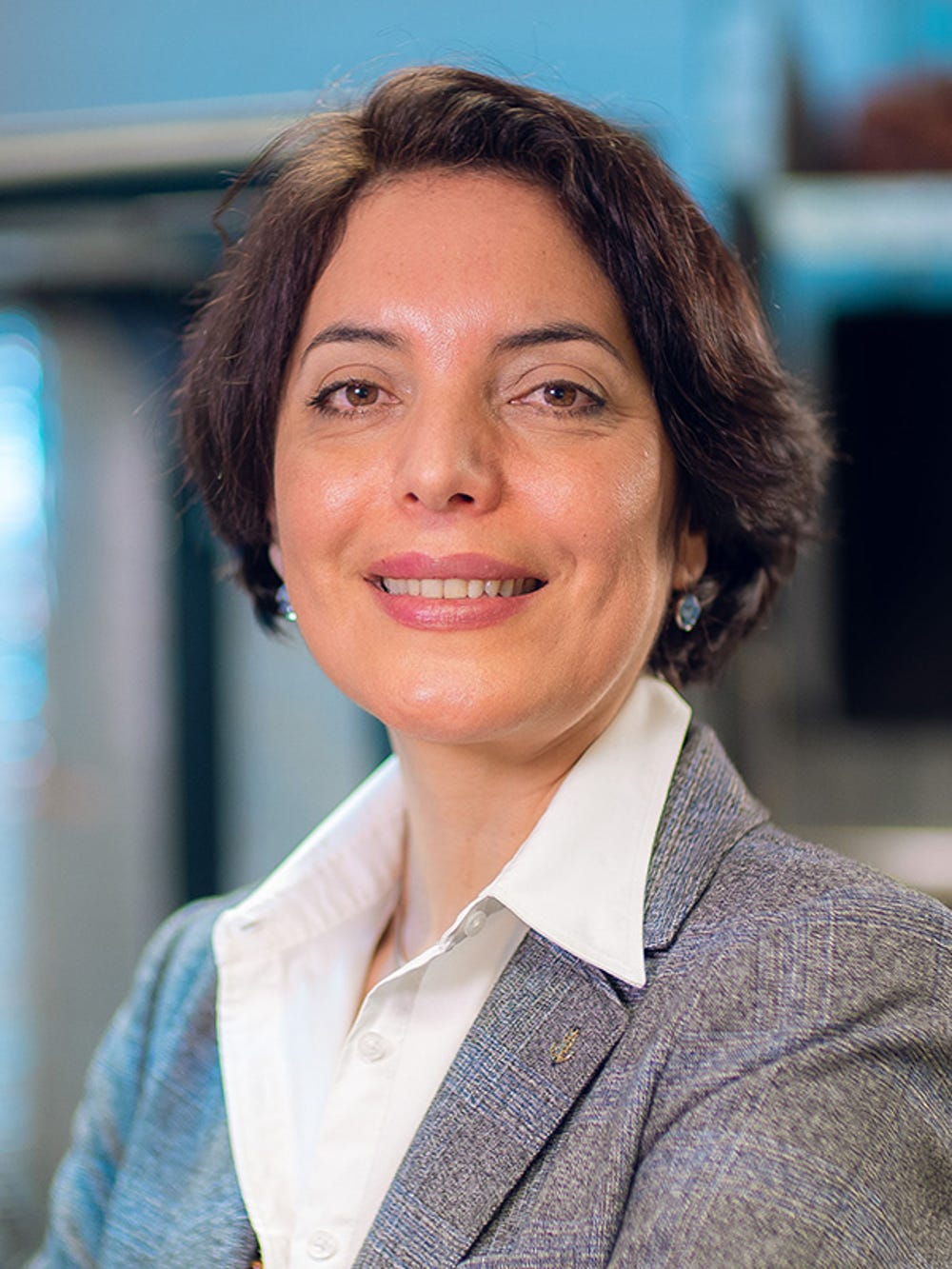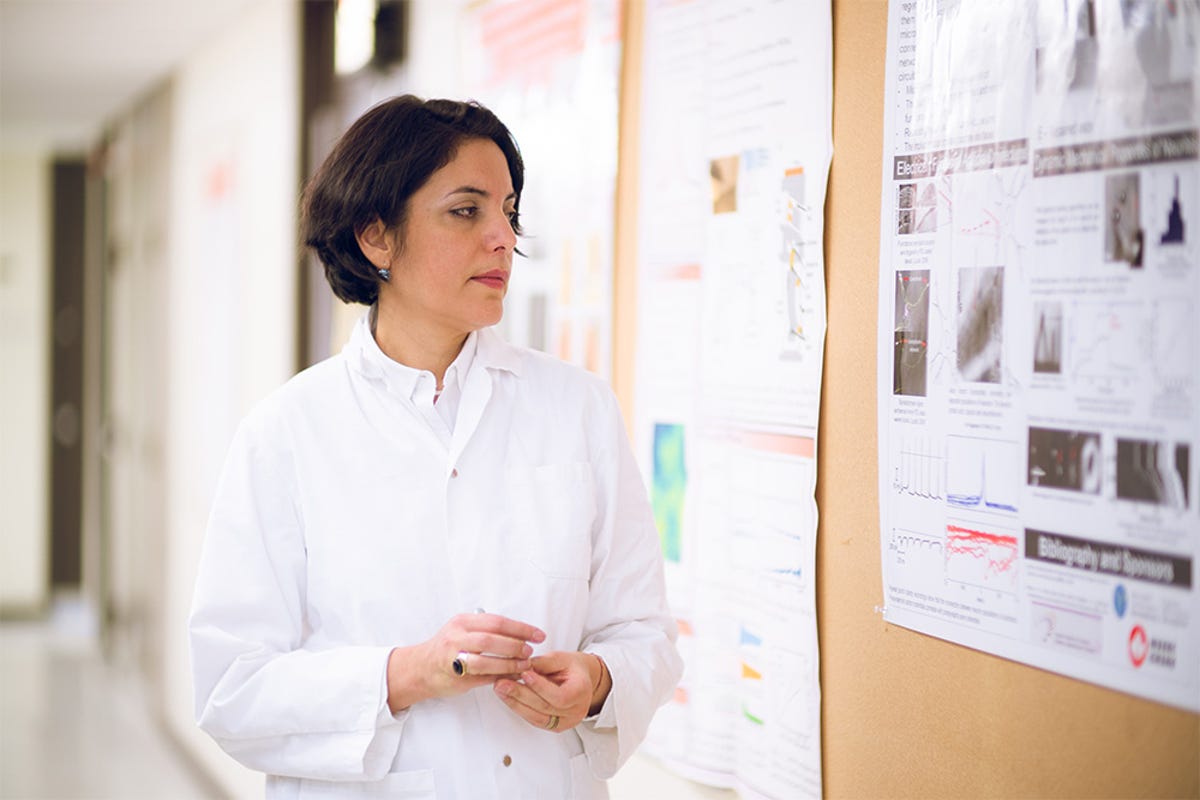Fellow Portrait
Margaret Magdesian
Ananda Devices

Updated March 2019
As populations age, neurological diseases such as Parkinson’s Disease, Alzheimer’s Disease and Multiple Sclerosis affect increasing numbers of people and cause a growing burden on health services, patients and families. Margaret Magdesian is well aware of the difficulties they entail. A pharmacologist and biochemist with over 20 years of experience in her field, she grew up in the shadow of the incurable disease from which her mother suffered. “No drug could alleviate my mother’s pain,” she explains. “Her life inspired me to devote my life to improving drug development.”
No drug could alleviate my mother’s pain. Her life inspired me to devote my life to improving drug development.

Advanced technologies for drug development
While medicines can be life-saving in a number of known diseases, in the neurological field the results are different. “For the vast majority of neurological diseases there is no cure, no effective therapy and in many cases not even reliable diagnostics available,” Margaret states. With a lack of access to human neurological tissue, it is difficult to ascertain why it is not functioning and likewise to predict the outcome treatment will have. “Most of our understanding of the human nervous system comes from studies in animals, but animals do not naturally develop autism, Alzheimer’s or Parkinson’s,” says Margaret. To know how drugs will react on humans involves recreating the nervous system, the spinal cord and the brain. For Margaret, the answer lay in today’s advanced technologies.

Human Organ-on-a-Chip Platform
CEO of Ananda Devices, founded in 2015, Margaret heads a team whose expertise in stem cells, microfluidics and nanotechnology has produced a micro device for growing human mini-brains, mini-spinal cords – known as organoids, or organs-on-a-chip – and innervated tissues to form a Human Organ-on-a-Chip Platform (HOCP). The organ-on-a-chip technology enables drugs to be tested directly on patients’ derived tissues. To innervate the tissues, and thus reproduce the transmission of neuron signals through the spinal cord to the brain, Ananda’s technology connects neurons on a chip 60 times faster than they can grow in vivo. “This rapid innervation makes the organoids fully functional and ready for testing while gaining precious time,” Margaret points out.
It was on moving to Canada from her native Brazil that Margaret started her work on modelling the human nervous system at the Montreal Neurological Institute at McGill University. Her technology was awarded several prizes and drew high interest. “To have an impact I knew I had to bring it to the market,” says Margaret, “to adapt the technique to the needs of scientists and pharmaceutical companies and bring real benefits to patients.”
There is an urgent need for innovation leveraging the power of technology to achieve scientific objectives, to bring research to life and turn ideas into impact.
More predictive solutions
Ananda’s devices enable pharmaceutical companies to have better predictions of human responses. “Drug development is a slow, expensive process,” says Margaret. “Every new drug is tested in cell cultures and in animals before clinical trials in humans.” A study published in Alzheimer’s Research and Therapy in 2014, for example, found that the success rate for Alzheimer therapies in clinical trials was just 0.4%. Ananda Devices is planning to boost those figures. Cosmetics companies and the food industry are other key sectors that can benefit from Ananda’s products. Moreover, such devices can reduce testing on animals.
To date Ananda has sold over 3,000 organs-on-a-chip and can produce up to 500 a day. Prospects are healthy. The global market is set to grow 69.4% a year to reach just over $6 billion by 2025, according to figures from Markets and Research. As Margaret point out, “there is no single HOCP solution. The market needs multiple solutions to address each human tissue affected by different diseases.”
I admire businesses that balance profit with social and environmental performance. Innovation is about creating solutions, not problems!


